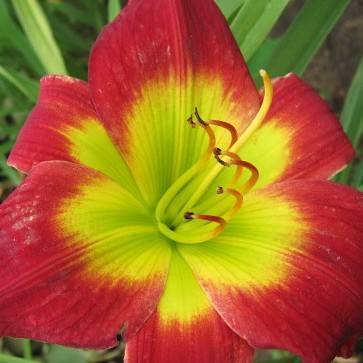
daylily
Hemerocallis 'Christmas Is'
Cycle:
Herbaceous Perennial
Watering:
Average
Hardiness Zone:
3 - 9
Flowers:
Flowers
Sun:
Full sun,part shade
Leaf:
Yes
Growth Rate:
Low
Maintenance:
Low
Drought Tolerant:
Yes
Salt Tolerant:
Yes
Care Level:
Medium
watering
Daylilies should be watered every other day during hot, dry weather. Water should be applied deeply and evenly to the soil around the plant, to a depth of 6 inches. A soaker hose or sprayer is ideal for this. In cooler climates with higher rainfall, Daylilies may need less frequent watering. During periods of heavy rain, however, Daylilies should not be watered. Daylilies prefer moist, but not wet, soil. Mulch around the plant can help conserve moisture. During periods of extreme heat, water more frequently for optimal blooms. Water in the morning and avoid wetting foliage to help prevent fungal diseases.
sunlight
Daylily (Hemerocallis 'Christmas Is') should be grown in full sun, which is defined as 6-8 hours of direct sunlight per day. This plant is fairly drought tolerant, but prefers to receive consistent watering during warm weather. If temperatures remain above 80 degrees, it will benefit from afternoon shade to prevent scorching. Daylilies require regular fertilization, especially during blooming season, from mid-April to late summer. A slow-release fertilizer should be used throughout the season, and a balanced water-soluble fertilizer should be applied in small doses shortly after bloom.
pruning
Daylily (Hemerocallis 'Christmas Is') should be pruned in the spring and summer months. The amount of pruning depends mainly on the age of the plant and the desired look. For young plants, it is best to prune back the dead, dying, and weak stems close to the ground to strengthen the base. As the plant matures, roughly 1-third of the foliage should be cut back and removed in late spring or early summer. After that, additional pruning can be done in late summer to ensure that only healthy and robust foliage remains. As a general rule of thumb, no more than 1-third of the foliage should be removed at any given time to ensure that the plant has time to recover.
